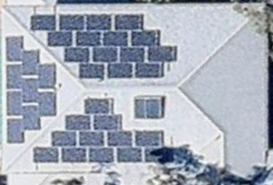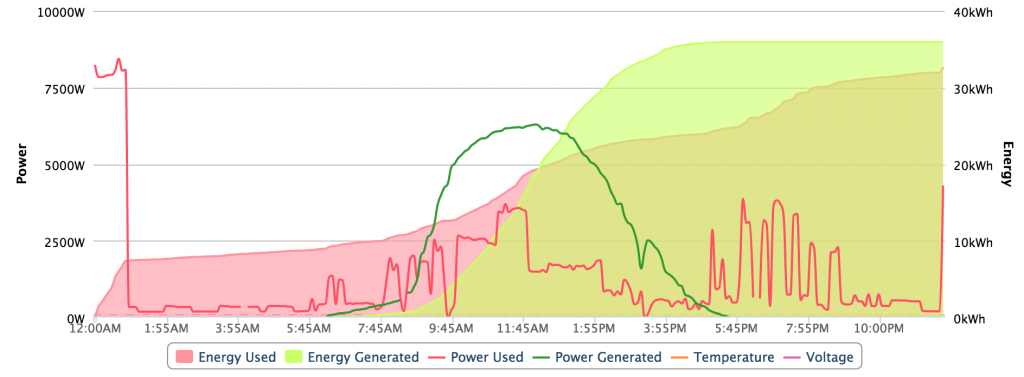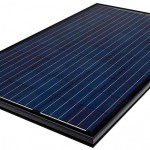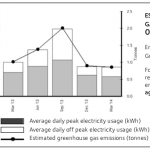In 2015 I moved into a new house which at the time was using a whopping 85 kWh/day on average in winter and not getting below 45kWh/day across most of the year. I straight away installed a large 10 kW solar pv array. A lot of this power was being exported to the grid during the day and we were still using a lot at other times. I wanted to try and use more of the power I was making, this posts tracks the journey through that process.
Generation
The solar system I installed comprised of 10 kW Hanwha Q.Cells 280W panels, Tigo Maximisers for independent panel optimisation, and a Fronius 10kw SYMO 3Phase inverter.
Not all of the panels face north and there’s some shading at the start and end of each day which the Tigo Maximisers (panel level production optimisation) help out with. All up my nominal 10 kW system probably outputs the equivalent of a perfectly oriented and unshaded 7-8 kW system in Sydney.
Demand
We don’t have gas connected so electricity is used for all sources of energy. The major loads are:
- Hot water
- Air conditioning – we only use it for heating 3 months of winter
- Swimming pool
- 2 x Electric cars
In addition to this, there are all the normal household loads
- Lighting
- Cooking – oven, induction cooktop
- Dish washer
- Refrigerator
- TV
- Clothes washer and dryer
Energy efficiency
After installing solar panels the next step in being supported by the power I was producing was to try and minimise how much I was using. This included:
- Lighting – all lights changed to LED and hoods were placed over them to reduce heat loss.
- Weather strips were installed around all external doors to reduce heating loads
- I replaced an existing circa 10 year old single speed pool pump with a new variable speed pump. This took a 1kW load down to around 250W. Reducing consumption by a factor of 4. With a bit of iteration I minimised the number of hours a day the pool pump was running for.
- The hot water heater was a resistive element unit that was nearly 15 years old and the insulation was damaged. This was replaced with a Sanden Heat Pump. A heat pump works in exactly the same principle as an air conditioner and uses about 1/4 of the energy of a standard hot water system.
- Over the last 3 years both the washing machine and dryer also failed. Both were replaced with much more energy efficient units. The dryer was replaced with a heat pump unit which like the hot water system uses much less energy than a regular dryer.
Combined these changes materially reduced energy consumption and opened up some opportunities for increased self consumption of solar.
self consumption optimisation
As part of the solar system installation we added an optional meter which showed our energy consumption from the grid. I configured the inverter to export the data to PVOutput.org which provides a very user-friendly interface showing both consumption and production.
In order to maximise self-consumption of solar we need to be able to move the time that energy is consumed. The load also needs to be material, there’s little to be gained in moving really small loads. It needs to be physically possible to move a load, lighting for example is physically possible to move but I still consider unmovable as you need lights at night time not daytime. For loads which can be moved we can assign an inconvenience factor – some loads you won’t notice moving, others like cooking would be very disruptive.
| Load | Materiality | Movability | Inconvenience Factor |
| Hot water | High | High | Minimal |
| Air Conditioning | High | Low | High |
| Swimming Pool | High | High | Low |
| Refrigerator | High | None | High |
| Cooking | Moderate | High | High |
| Lighting | Moderate | None | High |
| Dishwasher | Low | High | High |
| Clothes washing and drying | Low | Low | High |
| Electric Car charging | High | Low* | Low |
| Home battery charging | High | High | Low |
- With this in mind, the only two loads I initially used to improve my solar self-consumption were the hot water heating and the swimming pool. Everything else was either too small to warrant moving or created too much inconvenience by moving it, or the controls to move it didn’t exist.
- With the pool pump only using 250 W for most of the time it operates the solar system reliably produces a lot more power. Setting it to start at 9am and run through to 2pm when the peak rate energy tariff kicks in means it’s mostly running on solar.
- Similarly with the hot water system only drawing 1kW rather than run it overnight when most hot water operates I set it to start at 11am. The added benefit is that heat pumps are efficient because they’re using the energy from the warmth of the air, operating during the day when the air is warmer means less electricity consumption.
Using the basic time clocks built into each of the above devices is a very rudimentary form of control but it’s cheap, reliable and more often than not it achieves the goal of optimising solar self-consumtion and energy cost minimisation.
Battery charging
In August 2017 I installed a Tesla Powerwall 2 which is great for self consumption of solar energy. The battery installation includes monitoring of the solar production, household energy consumption and energy consumed from the grid. With this information it automatically charges using the excess solar available.
Per the table above, batteries score highly on the devices which are good for consuming solar as they’re highly movable and moving them has no physical consequence for the home occupant.
Electric vehicles are just batteries from an energy system perspective and so are equally suited to mopping up excess solar. When the cars charge the load is significant and would most often exceed the solar output so it needs some intelligent control. There are products coming to market that will solve this problem but for now I’m letting them charge overnight. Financially at this stage there’s no benefit for me in charging from solar vs off-peak.
self-sufficiency vs Self COnsumption
In the process of optimising my solar self consumption it made me ask myself, what am I really trying to achieve? I realised it was more about self-sufficiency than self-consumption. Making as much power as I consume. Doing this on a daily basis wasn’t going to be possible though, in winter I use a lot of power for heating when the solar PV is at its lowest output. If I can be self-sufficient on an annual basis I’m satisfied though. In NSW the grid currently has more than adequate capacity to accept more energy from intermittent renewable sources.
The energy system needs to always have supply and demand being equal. Energy consumed by end users must equal energy produced by generators. If I’m producing excess solar during the day this means somewhere another generation source is told not to produce as much power. In a way, the grid is acting like a big battery.
In 2017/2018 in the Ausgrid region this also works economically. On a time of use energy tariff, after discounts, what I earn for energy exported to the grid is more a less the same as what I pay for energy overnight (between 10pm in the evening and 7am the following morning).
Key take aways
- If you’re concerned about using as much of your own solar as you can, start with minimising your energy consumption.
- The same appliance changes that improved my energy efficiency enabled me to move the loads. Making the loads smaller enabled them to more reliably sit within the solar generation profile with simple timeclock based controls.








Have a look at the uk website apollosolarelectric.co.uk. The Apollo Gem has two outputs that operate sequentially, and it has provision for operating a heat pump or similar motor if you set the power limit and specify the operating time, so probably better for a washing machine. It will keep it operating if there is insufficient solar by importing power rather than interrupt a cycle.